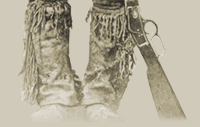 |

[ Project Plans | Essential
Questions | Knowledge Hunt | Glossary | Links ]
A Train Trip Across Early Canada
Creating a Travel Brochure for a Maverick Conducted Tour of the
Canadian Pacific Railway
Introduction
Students need to understand how difficult the planning and constructing
a transcontinental railway in time, manpower and resources was for
the country in the late 1800's, and how it became a source
of great pride and achievement. How did the building of Canada's
national railway affect the development of Canada? Why was the building
of the CPR so important for Canada? Why was it such a major undertaking?
What problems were faced as it was being built?
Project Explanation
In this project, students will develop an appreciation of how the
building of Canada's national railway affected the development
of our country. The CPR would be a major factor in changing the
way if life in Canada at the time, its citizens, and its identity
as it opened up the Canadian West. Students will create a travel
brochure explaining different aspects of the building of the CPR
from the point of view of one of the Railroad Mavericks.
Alberta Social Studies Curriculum Unit Connections
Grade Four - Alberta: The Land, Histories and Stories
4.2 The Stories, Histories and People of Alberta
Grade Five - Canada: The Land, Histories and Stories
5.2 Histories and Stories of Ways of Life in Canada
5.3 Canada: Shaping an Identify
Grade Seven - Canada: Origins, Histories and Movement of People
7.2 Following Confederation: Canadian Expansions
Materials and Resources Needed
Procedures
Students will create a historical travel brochure about the building
of the CPR. It will be written as if one of the Railroad Mavericks
would be conducting a grand tour of the CPR, and the brochure is
to get people interested. The students should attempt to incorporate
that person's point of view as much as possible into the writing
of the information. For example, a Chinese railway worker would
look at the construction of the CPR differently than the people
in charge. The teacher should collect sample travel brochures to
share with students, allowing them to distinguish the important
parts of a good brochure.
The brochure may be created by folding a plain piece of photocopy
paper into three sections or by using a software program such as
Microsoft Publisher, Word or Works. Students can either print out
and paste on sections of information, or write the facts they found
out about each section they will include in their brochure. They
can draw or glue pictures found from magazines, books or from sites
such as Images Canada on the Internet. The information may be presented
as point form or in proper paragraphs, depending upon the teacher's
preference.
Using the Mavericks: An Incorrigible History of Alberta
site, as well as others listed above, students should research information
on chosen sections from the following choices:
- Facts About the CPR – length, cost, etc.
- What was the route of the CPR?
- What problems did it face as it was being built? (E.g. Pacific
Scandal of 1872-73)
- What natural and manmade resources were needed to build the
CPR?
- What kind of manpower was needed? (Why was it a major problem?)
- How were Chinese railway workers treated?
- What and when was "The Last Spike?"
- What did the CPR do for Canada?
- Information about the Maverick "author"
Once all the information has been researched, students will begin
writing the content and planning out the layout of their brochure.
The brochure should include a title, sub-titles, a map, information
about the Maverick "author," and neat and colourful
illustrations or photographs. Students should make sure their brochure
contains interesting and accurate information about the CPR, is
attractive to look at and neatly laid out, and is properly edited.
Assessment and Evaluation
- Students and their teacher should develop their own rubric by
identifying evaluation criteria for the project that will match
their own learner outcomes. This allows students to understand
the expectations for their work and to have input into the ongoing
evaluation process.
- Individually or in small groups, students might evaluate the
work of two or three other students in order to gain insight into
how their peers approached the project.
- A project journal may be used for information gathering as well
as for reflective writing as the process is taking place. Students
can pose questions, vent frustrations, synthesize their work,
examine their process, and even wonder about what they are missing
or what is still needed for their project. This may be completed
as a group or individually.
Ideas for Enriching this Project
- Students can plan out the number of kilometers and time spent
traveling on a modern train or a historic train to get across
Canada. They could also find out the total costs of either the
historical or modern trip.
- Students can use copyright free photographs from appropriate
sites or the Images Canada site to add onto their brochures.
 |



![]()
